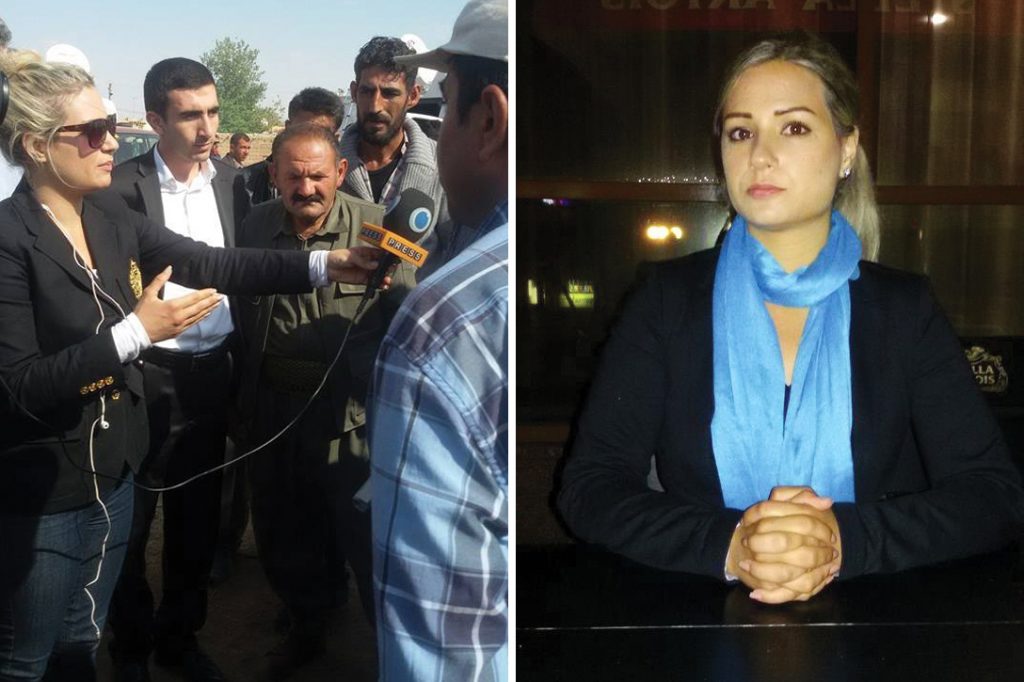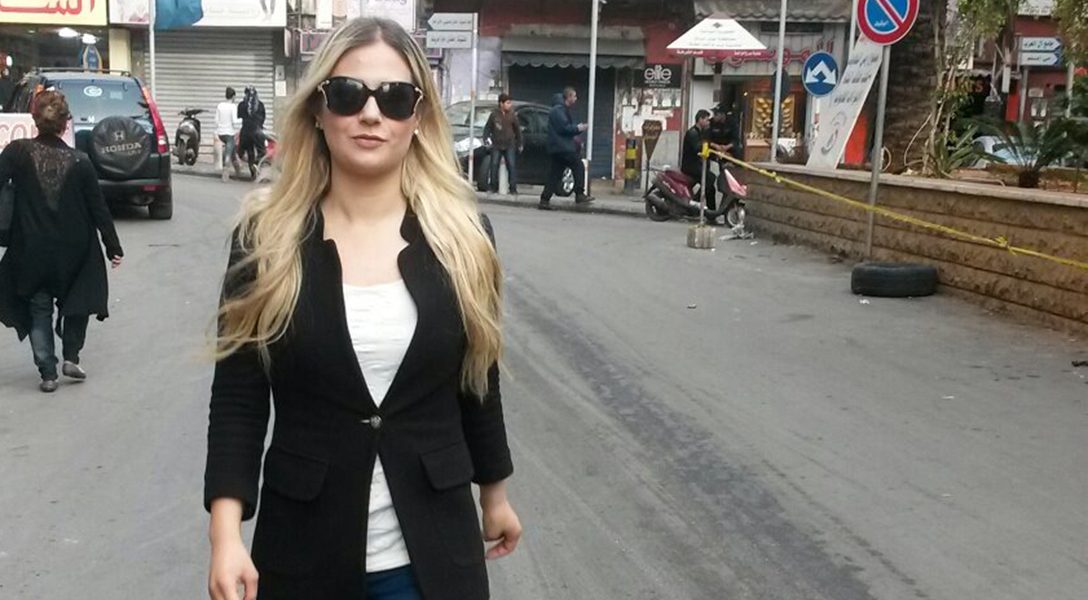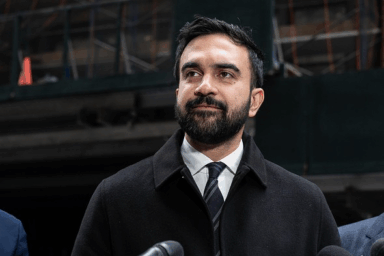The young American journalist investigated Turkey’s meddling in Syria’s civil war. On the fifth anniversary of her death, many questions remain unanswered.
Two days before her death in 2014, Serena Shim, an American reporter from Michigan, stood on the same Syrian border that Turkish troops and allied Syrian rebels recently crossed on President Recep Erdogan’s orders to drive out the Kurdish militia that Turkey considers “terrorists.”
These same Kurds led the successful international fight against the Islamic State (IS) in northeast Syria.
Turks Press Locals to Report Her Movements
Shim was fearful. She had recently reported for the Iranian-backed Press TV about Turkey’s role in smuggling IS fighters into Syria on World Food Programme trucks. In her final live broadcast, she described how agents from the Turkish National Intelligence Organization (MIT) had been asking questions about her movements while she was covering the siege of Kobani by IS militants.
The intelligence agency had labeled her a “spy,” she said, and pressed locals to “give them a phone call” if they saw her.
https://www.youtube.com/watch?v=lgXPW2q7v9M
Via a video feed, the Detroit native speculated that the unnerving surveillance of her by the MIT was triggered by the bright light she had shined on Turkey’s meddling in Syria since 2012.
Shim had amassed evidence of militant training camps operating near the Turkey-Syria border, interviewed the militants themselves, and filmed footage of long caravans of trucks passing through the Turkish side of the rebel-controlled Bab al-Hawa border crossing.
Shim was killed on October 19, 2014, two days after her last broadcast. She was the lone fatality following a car crash in Turkey’s Sanliurfa province. The crash may not have been an accident. Official reports contain striking discrepancies.
On the fifth anniversary of Shim’s death at age 29, her fate is a reminder that reporters on the ground risk their lives to inform the public of the ongoing conflict in Syria, and the human misery it is inflicting.
Now, with the world watching in horror the Turkish-led invasion of northern Syria following President Donald Trump’s decision to pull US military support for Kurdish fighters in the region, it seems time to look more deeply into Shim’s tragic story.
Her friends and family have demanded answers to the questions surrounding her death, but have been greeted with official silence. Despite her status as an American citizen, there was never an investigation by the US or any other government body into her death — despite its mysterious circumstances.
Those close to her claim that even her fellow journalists reacted with dangerous indifference, possibly linked to Shim’s work as a freelancer for Iran’s Press TV — considered by many in the Western media to be little more than a propaganda outfit for Iran’s ayatollahs.
“He sped up very quickly and cut in front of me and made me crash into him.”
The details of the incident that led to Shim’s death have emerged in erratic intervals at the sole discretion of the Turkish media.
When asked to comment during a news conference the following day, a US State Department spokesperson stated that “local authorities in Turkey” were apparently handling the investigation.
What was simply dubbed a “heavy vehicle” was said to have triggered the collision. The heavy vehicle later evolved into a “concrete mixer” that allegedly collided with Shim’s rental car.
Shim’s first cousin, Judy Irish — who was the driver at the time of the crash — sustained only minor injuries and was taken to a nearby hospital in the city of Suruc. Shim, meanwhile, was taken to a separate hospital in the city of Sanliurfa. It was over 30 miles away from where her cousin was treated.
According to Hurriyet Daily News, the local gendarmerie in Turkey initially wrote in their official crash report that Irish was the sole culprit in the accident. The report went on to quote the testimony of the alleged driver of the concrete mixer, Sukru Salan.
“A car traveling at a very high speed went out of control, entered my lane and came under my truck,” Salan reportedly testified.
However, that December, it was reported that Suruc’s Public Prosecutor Office was seeking up to six years in prison for Salan, accusing the driver of causing “death through negligence.” The trial, reportedly set for March 2015, never occurred.
#Lebanese–#American reporter’s camerawoman ‘sole culprit’ in car crash case https://t.co/sKCRfBUBsx pic.twitter.com/5wNqa5rcQQ
— Hürriyet Daily News (@HDNER) October 24, 2014
It is also commonly misreported that Shim was departing from Kobani and on her way back to her hotel in the Turkish province of Hatay when the accident happened. But it was just the opposite. “We spent one night in the hotel in Hatay and left again for Kobani in the morning,” said Irish, explaining that Shim had become so frustrated with the local cameraman she had hired that she decided to drive him back to Hatay and purchase a camera of her own instead.
“I bought a car, I have a camera — this is a one-man show now!” Shim later quipped in a voice message to her mother.
In the days after Shim’s passing, strange photographs began to appear online. One photograph shows Irish in a hospital bed with a large bandage covering her broken nose — the only injury that she suffered. This was paired with a snapshot of the front page of Shim’s passport and, later on, a slew of images depicting a compact car crushed like a tin can and facing toward a cement truck that appeared undamaged.
Irish, a US-born citizen, disputes the cement truck account entirely, stating instead that it was a semi-truck that caused the collision by intentionally running them down.
“I was driving in the fast lane on a three-lane, one-way highway,” she told WhoWhatWhy. “The semi-truck was behind me in the middle lane. He sped up very quickly and cut in front of me and made me crash into him.”
No photographs or CCTV footage of Shim or Irish at the scene of the crash have ever been released.
Early reports alleged that Shim had died at the scene of the collision, but were later amended to claim that she had died of heart failure a half hour after arriving at the hospital in Sanliurfa. While autopsies were allegedly conducted in both Turkey and Lebanon, the results are not verifiable.
“You would not have known she was gone,” Shim’s mother, Judith Poe, contended, describing her daughter’s appearance inside the morgue back in Lebanon.
“One little teeny piece of hair was out of place. Her makeup was completely on, her eyeliner. Everything. There was not a scratch on her.”
Journey for Truth
Shim grew up in the Detroit suburbs of Dearborn and Livonia. After high school, she moved to Lebanon, settling near south Beirut in her father’s hometown of Bourj el-Barajneh. In 2006 — as an undergraduate at Beirut’s American University of Science and Technology — Shim, who was the mother of two children, was hired to host a news show for Press TV, which had launched as the first ever Iranian international news network that July. She would go on to become a freelance correspondent at the network’s Beirut bureau, producing her own local reports and documentaries.
War reporting consumed the last four years of Shim’s life. She was in Syria when the peaceful uprisings began in 2011, and later went undercover inside Turkey to confront the state’s complicity in the conflict. During the summer of 2013, Shim covered Turkey’s “Gezi Park protests,” a nationwide wave of anti-government demonstrations that were met with heavy police violence and repression.
https://www.youtube.com/watch?v=tvXwRsGvuis
Her video reports and investigations anticipated several major shifts in Turkey’s national affairs, such as Turkish President Recep Tayyip Erdogan’s plan to transform the government from a parliamentary to a presidential system, along with the government’s aggressive crackdown on free speech and independent media that continues to this day.
In a country where local journalists faced continuing threats, Shim was frequently approached by grateful residents who implored her to report what was otherwise forbidden. “I’ve talked to a lot of people who tell me, ‘I could say one thing right now and then they could take me out of my house in the middle of the night,’” she once remarked, while covering the Gezi Park protests.
Shim also warned of the dangerous “blowback” repercussions facing the country on account of the massive proliferation of weapons along Turkey’s border with Syria. Such fears eventually became reality following a string of deadly terrorist attacks that reached as far as Istanbul in 2015–2016.
Shim also reported the Turkish government’s eagerness to invade Syria. “There’s promises and negotiations that have been made under the table between Recep Tayyip Erdogan and the West,” Shim explained during an interview in early 2013. “He wants to get the job over with,” she added.
Shim’s mother has alleged that Erdogan — who was prime minister at the time — had become incensed over questions posed to him by Shim during a press conference in late 2012, causing her to be forcibly removed from the room. Poe has since expanded on her claims, stating that Erdogan not only vocally ordered that her daughter be ejected from the press conference, but — as Shim was being whisked away while continuing her line of questioning — he had additionally decreed that she never be allowed back inside the country again.
Though supplementary sources have not yet been substantiated, Shim’s travel history corresponds with the allegations. During her final broadcast, she even plainly professed that she believed that the Turkish authorities were wondering why she had returned.
“I think they want to know why I’m back,” she openly surmised. “I wonder if they think that I’m going to focus on a different area and that I’m using the umbrella of [the siege of] Kobani and I’m actually getting in here to do some type of investigative journalism …And it just gives me the feeling that something is boiling and something is brewing that they think that I’m here to catch.”

Shim’s final months were mostly spent in Iraq, covering the country’s parliamentary elections and the Iraqi army’s fight against IS terrorists, and then in Ukraine, reporting on the armed conflict in the country’s east — with a stop in between for the Iran-P5+1 talks in Vienna — before returning to Turkey for what she envisioned to be her swan song as a foreign correspondent. She had quietly been making plans to move back to Michigan with her husband and two small children, her family told WhoWhatWhy.
“This is my last trip and I’m done,” she revealed to her mother in a voice message shortly before leaving for Turkey. “Because, after that, there’s nothing else that I can do — and I want to go out with a bang.”
A week later, she was dead.
The Aftermath
A month after she was killed, the State Department maintained that, in relation to Shim’s death, it “does not conduct investigations into deaths overseas.”
“Generally speaking, we may monitor local authorities’ investigations into the causes of non-natural deaths of US citizens overseas, but we cannot conduct our own investigations,” an official later clarified.
Shim’s family says that the US Embassy in Turkey contacted them a week after her funeral in Lebanon and astonishingly inquired whether Shim was still on Turkish soil or not.
This professed ignorance by a US official becomes all the more inexcusable when the wider context of Shim’s death is scrutinized.
Not only had Shim announced that the MIT was looking for her and that she was “a bit frightened” at what they might use against her, her lengthy history of reporting the forbidden inside Turkey made such fear all the more credible. The treatment of the press by Erdogan and his ruling Justice and Development Party (AKP) has been appalling, with over 150 journalists imprisoned inside Turkey as of February 2019, according to the European Federation of Journalists.
Given all these facts, say former colleagues, it becomes increasingly hard to understand why the US government has stayed silent.
Car Hacking Report Refuels Concerns About Michael Hastings Crash
10 Years After Russian Journalist’s Murder, Reporters Everywhere Under Threat
The head of Press TV’s newsroom, Hamid Reza Emadi, spoke out in the immediate aftermath, saying that Shim’s death was “likely an outcome of her critical expository reports of the adverse impact of Turkish and Saudi policies on Syrian refugees.” Emadi additionally demanded that the Turkish government be held accountable before the international community.
Izzettin Kucuk, the governor of Turkey’s Sanliurfa Province, sharply denied the allegations, calling them “baseless” and “attempts to put Turkey in a difficult situation.”
“Sassy chose to work for Press TV,” explained Poe, referring to her daughter by her family nickname. “They let her report the truth.” Since her death Shim has become a heroine of alt-media and non-mainstream journalists. The Serena Shim Award for Uncompromised Integrity in Journalism was established by a pro-Assad group in 2019. Her legacy is also celebrated at the Arab American National Museum (AANM), a Smithsonian Institution affiliate, in Dearborn, MI.
“The price of truth cost my daughter her life,” said Poe.
Related front page panorama photo credit: Adapted by WhoWhatWhy from Left Hand Rotation / Flickr (CC BY-NC 2.0) and Facebook.



